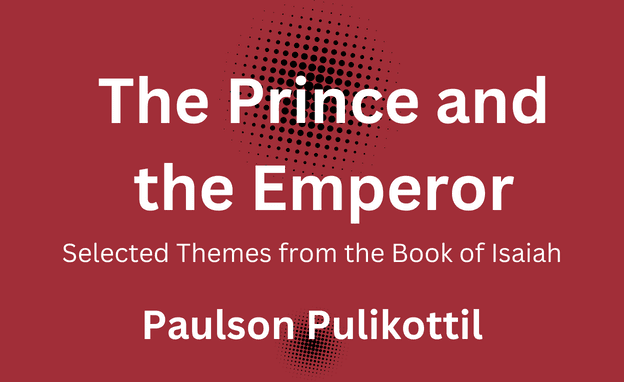10th November, 2025
A Fountain Publication

The Lodestar
Online Magazine for the Thinking Christian

Faith
Read the Bible Right
“The Bible, a tapestry of stories and teachings, demands careful interpretation. Isolate a verse, and you risk misreading its true meaning. Dive deeper into the historical, cultural, and literary context to unlock God's Word.”
By Thangchinllian Guite on 7th November, 2024
The Bible is a complex and multi-faceted text of various literary genres, written over centuries by different authors. To properly interpret and apply its teachings, it is crucial to read the Bible in context. It is easy to misinterpret and misapply verses without considering the historical, cultural, and literary backgrounds. Avoiding Misinterpretation When Bible verses are taken out of context, they can be twisted to mean something entirely different from their original intention. For instance, Philippians 4:13 (“I can do all things through him who strengthens me”) is often used to suggest personal empowerment in all situations. However, within its broader context (Philippians 4:11-12), Paul speaks of contentment in both abundance and need, showing the verse is about relying on Christ in any circumstance rather than a blanket promise of success. Similarly, Jeremiah 29:11 (“For I know the plans I have for you, declares the Lord, plans for welfare and not for evil”) is commonly quoted to imply personal prosperity. However, when viewed in context (Jeremiah 29:4-14), it becomes clear that this was a specific promise to the Israelites during their exile in Babylon, not a general promise for material success. Understanding Literary and Cultural Contexts Each book of the Bible is written within a specific cultural and historical framework. Understanding these contexts allows for a more accurate interpretation of the text. For instance, the epistles in the New Testament were written as letters to specific churches, often addressing particular issues. In 1 Corinthians 11:5, where Paul speaks about women praying with their heads covered, this instruction was based on the cultural practices of Corinth at the time. The passage is not necessarily a prescriptive command for all times but a culturally specific instruction. Moreover, understanding the genre of the book you are reading is vital. Poetry, prophecy, historical narrative, and apocalyptic literature each require different interpretative approaches. For example, the Psalms are often poetic and symbolic, requiring careful reading to distinguish metaphor from literal instruction (Psalm 23). Likewise, Revelation employs apocalyptic language filled with imagery and symbolism (Revelation 1:1), and interpreting it as a straightforward narrative would lead to confusion. Guarding Against Misapplication Reading the Bible in context not only helps in understanding its meaning but also guards against misapplying its teachings. When readers isolate verses, they risk misapplying them to modern-day situations. For example, some might use Matthew 7:1 (“Judge not, that you be not judged”) to reject any form of moral evaluation. Yet, when read in context (Matthew 7:2—5), Jesus is teaching against hypocritical judgment, not all forms of judgment. A proper contextual understanding reveals that moral discernment is necessary, but it must be applied with humility and self-reflection. The Role of Exegesis To truly grasp the meaning of a biblical text, exegesis—drawing out the text’s intended meaning—is necessary. This involves not only reading the surrounding verses but also considering the broader biblical narrative. For example, when studying the Old Testament laws, such as those found in Leviticus, it’s essential to consider their place within the covenant God made with Israel and how the New Testament reinterprets these laws in light of Christ’s fulfilment of them (Matthew 5:17). Reading the Bible in context is crucial for understanding its teachings accurately and applying them faithfully. By avoiding the pitfalls of isolating verses, appreciating the literary and cultural contexts, and engaging in sound exegesis, readers can approach Scripture with greater clarity. Through this approach, the Bible remains a living and active text, guiding believers towards a deeper understanding of its message and its relevance for today’s world. (Thangchinlian Guite, hailing from Dorcas Veng, New Lamka, Manipur, is a dedicated member of his local church, serving as a Sunday School teacher within the Baptist Children's Department. With a lifelong passion for writing, he finds joy in weaving his imagination into words on paper.)
Share this Article
Advertisements
Explore More on The Lodestar

7 Tips for Communicating Christian Faith to Children Who Doubt
Communicating faith with a child who doubts requires love, respect, and understanding. This guide shares heartfelt ways to connect, listen, and inspire hope through Christ’s example and stories,...

Empty Religion versus Transforming Faith
Are religious routines leaving you unchanged? Discover why empty rituals will not transform your life and how true faith leads to genuine, lasting change. Read on to explore the difference!
Subscribe to our free weekly digest.
Join hundreds of others who have subscribed to our free weekly digest for inspiring news, faith, community, family, opinion, and culture content. Stay connected and nurture your spiritual growth with thought-provoking articles delivered straight to your inbox.
Join our growing community of readers today.

